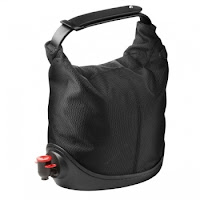Its not a chair, it is the family of chairs! Family Chairs from Design house Stockholm is actually four different chairs in three different colors. The chairs are like traditional Swedish wooden stickback chairs, typical for Scandinavian design, made from lacquered beech wood. But unlike their ancestors, these chairs have personal stickbacks and spundles between the chair legs.
The chairs can be used separately. As unique piece of design one chair refers to the traditional stickback chairs with a little modern twist. But placed together, they form a family: the chairs are being similar but having each one a distinctive character that comes out when they are grouped together.
The design of the chairs transforms something well-known and traditional into something unexpected. The designer Lina Nordqvist has told, that she is fascinated by objects. She is fond of giving the furniture their own special individuality that overcomes mere technical function. In her past Lina Nordqvist has pursued a career as a professional set designer in the Swedish film industry for several years, which might also explain the stage like character of the chair.
MoMA, the Museum of Modern Art in New York, picked up the first shipment of Family Chairs for it’s autumn collection. Family Chairs won the Accent on Design Award in New York August 2009, and was also awarded with Swedish Elle Decoration’s Design Award in 2010.













